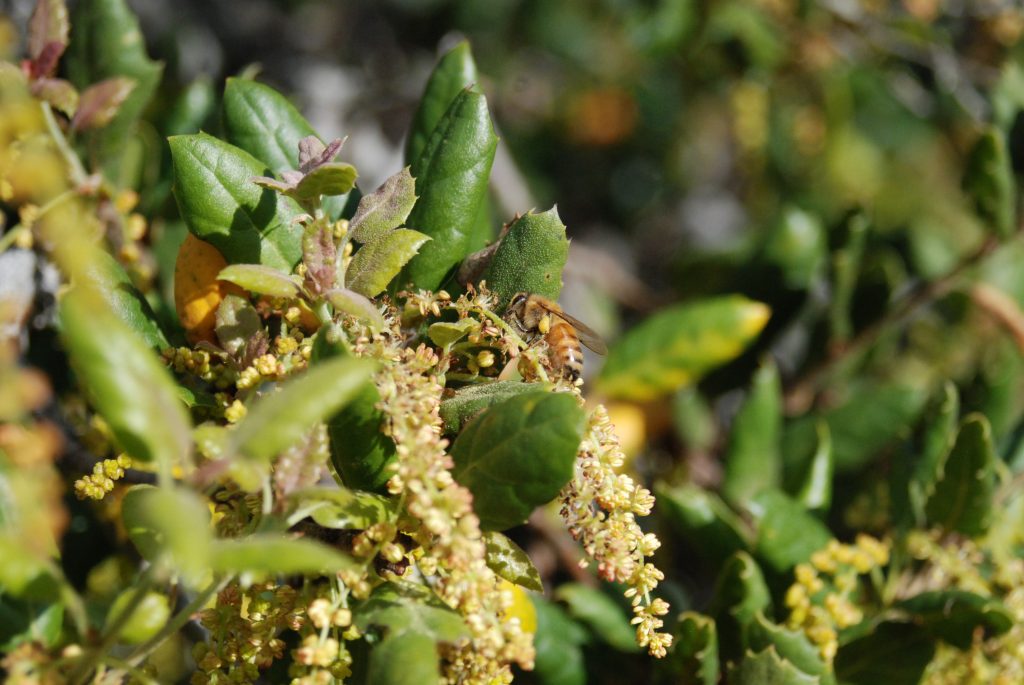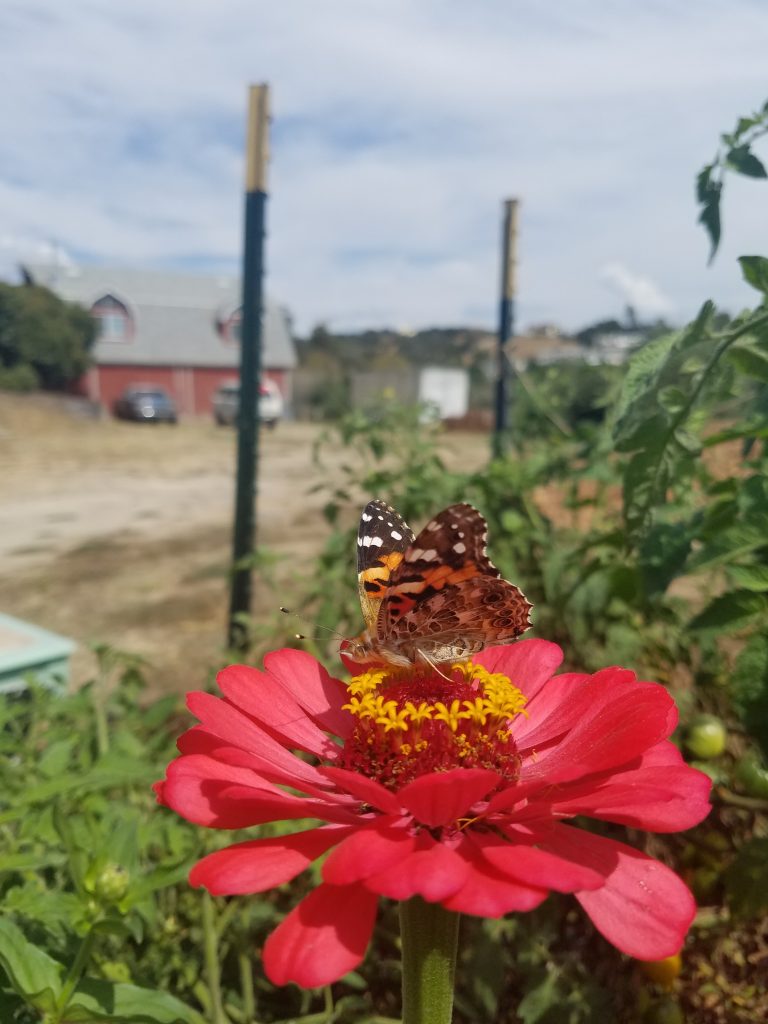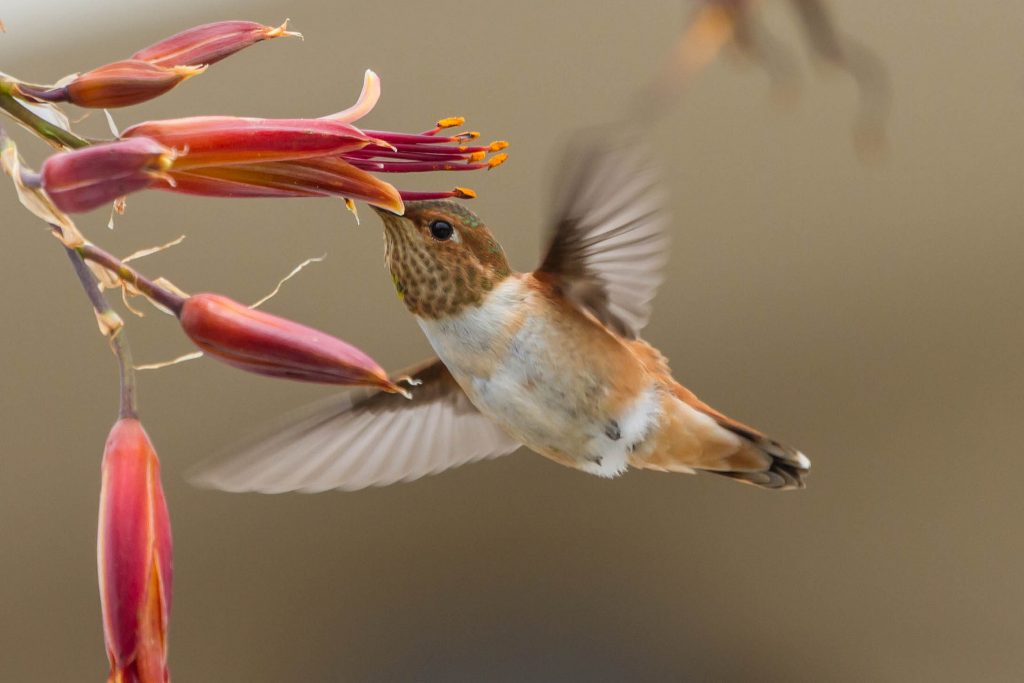We depend on pollinators like bees, birds, and butterflies. They subsist on nectar and pollen and, in turn, help about 75% of the world’s plants and crops produce fruits and seeds. Many of these plants are cultivated to provide food for people.
Many native California plants also rely on pollinators in order to reproduce. The fruits and seeds that are created in the process provide necessary sustenance for our native wildlife. (Some animals even eat the fruit of poison oak!)
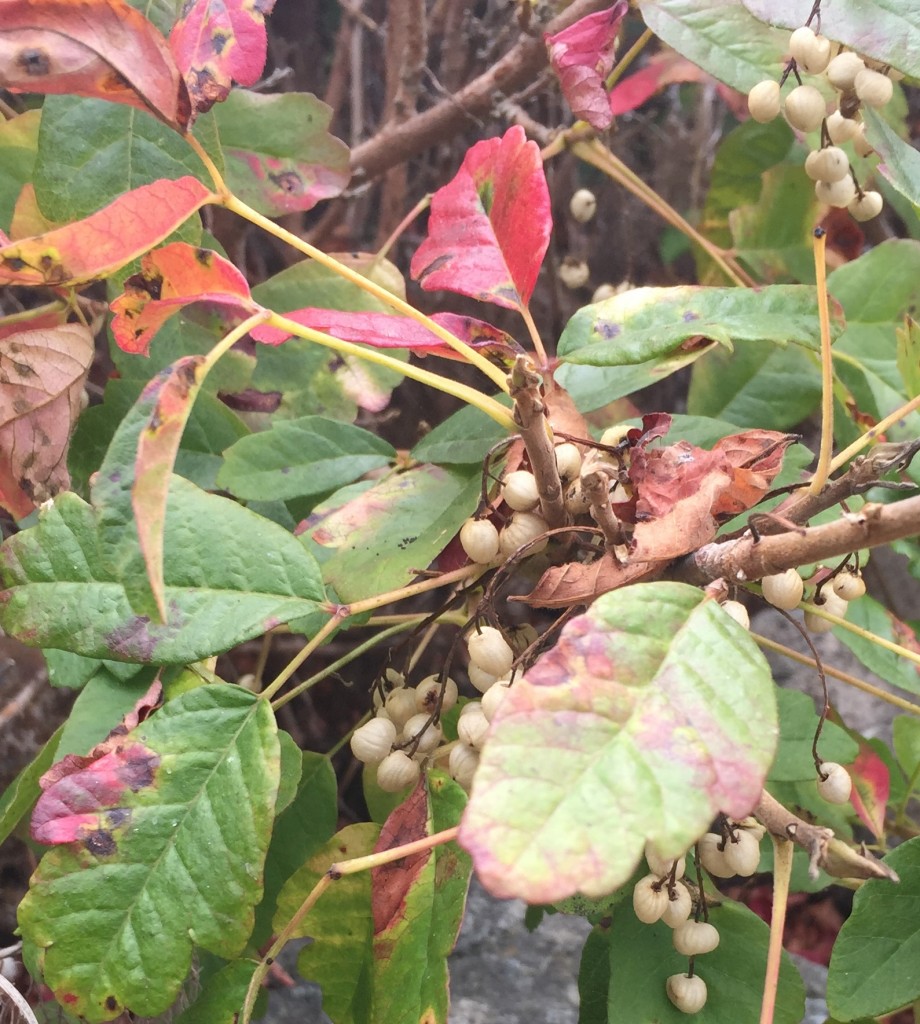
Winter is a perfect time to add California native plants to your garden. The higher rainfall amounts that we typically get during the winter can help these plants establish the deep root systems that many of them need. (Even in years when we receive sparse rainfall, planting in winter is helpful because the cooler temperatures allow you can water less frequently.) Giving plants a few months to establish before the weather warms up helps them get ready to flower.
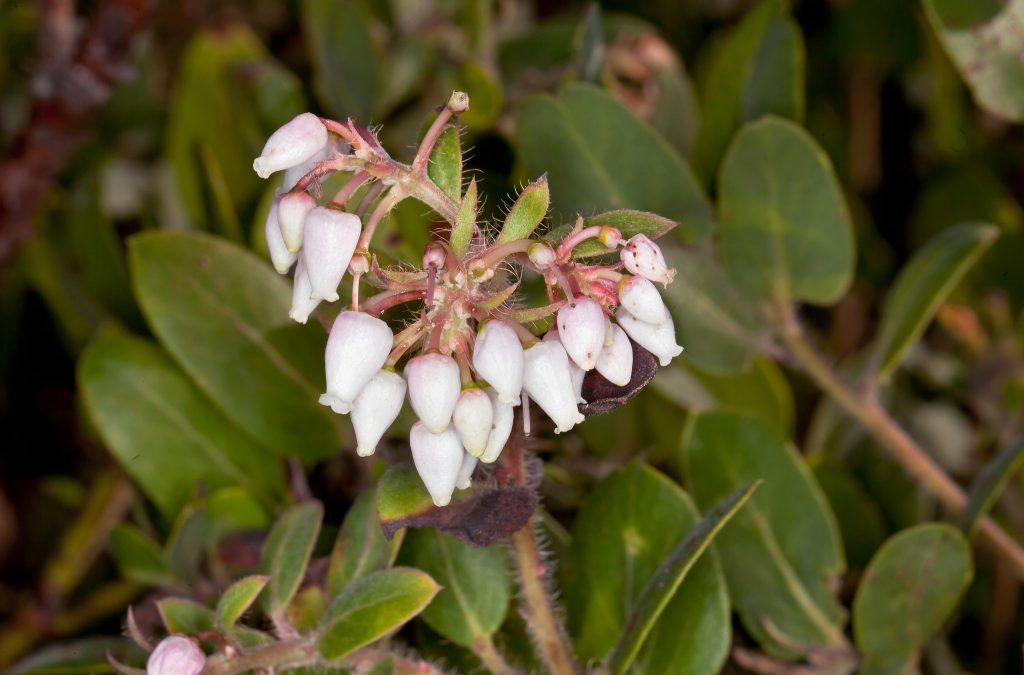
If you’re interested in learning more about gardening with California natives in order to benefit pollinators, check out these resources.
While you’re planning new California native additions to your garden, or considering changing your perspective on poison oak, please enjoy the photographs of pollinators doing what they do best in our watershed.
